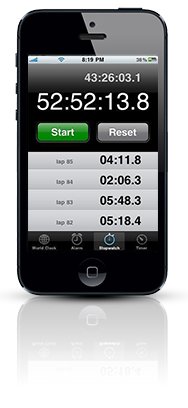Lack of integrity, unfounded promises, biased decision-making, and money-grubbing: Unfortunately, all of these things have become synonymous in many people's minds with personal training.
Some of this is to be expected in an industry that has both so much money and so much authority over people. In 2011, the fitness industry was worth $21.4 billion.1 It is expected to grow by at least 24 percent by the end of the decade.2
Hiring a personal trainer is often an emotional decision. Many people only do it when they feel otherwise unable to improve incredibly important, personal things like their health, appearance, and quality of life. Given that, it's not surprising that some individuals take advantage of consumers. But an industry this important shouldn't be known for rampant dishonesty.
I was a personal trainer. It was my career, and I was passionate about it. My focus is now on giving trainers the skills they need to succeed through the Personal Trainer Development Center. I still believe that personal training is a fulfilling career—not a part-time job—that can change people's lives. Proper exercise technique, theory, and consistent physical training are some of the greatest weapons in our arsenal against pain and disease. They can help us live better lives and save billions of dollars in health care costs.
But this will only work if we—both trainers and clients—approach it with the seriousness and honesty that such a crucial project deserves. Here are eight things you need to know to get the most out of the time you spend with a trainer.

1
The industry is in disarray
Trainer education in North America is largely unregulated and, while good resources exist, most are insufficient. Anybody can call himself or herself a personal trainer, and anybody can create educational platforms and designate trainers as "certified."
Trainers don't have a prescribed scope, and nobody really knows what they should or should not know. Terms like "metabolic conditioning," "functional training," "core," "muscle confusion," and "periodization" get thrown around haphazardly. Over-complicated training methods for elite athletes and Navy Seals have been dumbed down and sold to consumers because they are "sexy."
Trainers get tricked into emptying their wallets just as much as the unfortunate clients they serve. Who can blame them? With all the noise, it's difficult to get a clear and unbiased view of what the job entails and which methods work best.
What this ultimately means is that in most commercial gyms, a trainer is only as good as they want to be. They should be reading industry journals and textbooks, not relying on YouTube to get ideas. The best trainers constantly improve their methods and learn new techniques, but also test them before prescribing them in a workout.
You, the client, aren't a test subject. You're a paying customer. Ask questions and stay in dialog with your trainer. If you feel like a guinea pig, you're right to be suspicious. Don't work with someone you don't trust.
2
Trainers don't all have six-packs

Some trainer's lives revolve entirely around fitness. They eat a steady diet of unflavored chicken and broccoli, work out twice every day, and are in bed by 9 p.m. sharp. They're lean, ripped, and live a lifestyle you're probably not willing to mimic. Others allow themselves to have an extra piece of cake and are OK with skipping workouts. Neither is necessarily any better qualified than the other.
Don't judge a personal trainer solely on appearance. Just because someone is in good shape doesn't mean that they know how to help you navigate the journey it took for them to get there. You are different, in everything from your daily commitments to body type. Before you ask anyone for their "personal routine," remember how important genetics are! In one study, some subjects gained as much as 10 cm (~4 inches) in their biceps and doubled their strength over others who followed the exact same protocol.3
Tiger Woods has a golf coach, and I assume he's a worse golfer than Tiger. This expert has taken years to study every aspect of the game and can help Tiger, even if he can't beat him. Just because a trainer can't grate cheese with their abs doesn't mean they can't help you get there. They can know what it takes and still have decided to live without the requisite dieting it takes to get there.
A trainer's job is to mesh a quality workout program with your lifestyle while understanding your limitations. The good trainers know that the best program is the one you'll follow.
3
It's not a trainer's job to inflict pain
Delayed-onset muscle soreness is the result of your body being asked to perform exercise to which it is unaccustomed, whether it's the type, intensity, or duration of the exercise. What this means is that anything different will make you sore.
Sure, it's possible that the factors making you sore are also signaling the body to build more muscle, but pain doesn't have to be present for growth to happen. The three primary mechanisms for hypertrophy (muscle gain) are mechanical stress, metabolic stress, and muscle damage. All can occur in the absence of soreness.
A trainer should monitor soreness but not pump his or her fist in jubilation when it happens. Soreness is a signal of adaptation to the workouts and how well recovery mechanisms are working. It allows the trainer to alter the training as he or she learns how your body responds. If soreness persists, something is awry and needs to be fixed.
You can get stronger, look better, and function better long after you've stopped being sore, so don't feel obligated to seek it out. You can also train more frequently and be less miserable. Trainers need to save their fist pumps for when you put on muscle, not when you suffer.
4
It's the why that matters, not the how
In a 1981 issue of "Management Review," George T. Doran created a now-legendary goal-evaluation system known as the "SMART objectives." Goals, he said, should be:
- Specific
- Measurable
- Attainable
- Relevant
- Timely

If you take a look at most people's gym logs, you'd think fitness success is all about S, M, and A —the "what" and "how." But in practice, those are nothing without the R. For example, having a goal of losing 20 pounds before the summer may seem SMART. It's specific, measurable, attainable, and timely. But unless you know why it's relevant, you'll struggle to go through the hard work to get there.
Take the time to look deep inside yourself and stop focusing on numbers. Running a 5k is not a goal, nor is losing 20 pounds or benching 225 pounds. The goal is the reason you want to do those things. The clearer you are about what's really bringing you into the gym, the better you'll be able to use your trainer to help you achieve it. If you don't have your "why" in place, you're ultimately just paying someone to put you through the motions.
5
Trainers get frustrated when homework isn't done
Personal trainers generally don't make millions. More often than not, they're hard-working people doing a job they love. Their job satisfaction comes from seeing you succeed. Because of this, it's frustrating when you don't show the same commitment outside of a session that you do during it.
The average client trains one or two times per week. Occasionally somebody will train three times, and rarely will somebody train four or more. That leaves 164 hours each week for you to mess up your lifestyle, diet, or exercise and take away from your results. A good trainer will make sure you exercise well, but the onus is on you to want it bad enough to take some personal responsibility.
If you've been working hard for an extended period of time and you're not getting the results you want, something is awry. We want to help you figure it out, and open communication is a must. If you find it impossible to do your homework, then your program must be altered to fit it into your lifestyle. It may mean your short-term goals will have to be scaled back, but at least you'll still be moving toward them.
6
A trainer can advise you on nutrition—to a point
In nutrition, perhaps even more than in training, nothing is black and white. Common vitamins that are beneficial for some can be overkill for others. Performance supplements cloud the issue even more, particularly when a trainer is the one selling them to you. Large commissions are paid to trainers who sell supplements; others have to meet sales quotas just to keep their jobs. You'd better believe that can cloud their judgement, especially because most trainers know just as much about nutrition as you do.

So it might come as a surprise that I think it's OK for a trainer to advise a client on nutrition. But think of it this way: Your trainer's job is to help you devise strategies to help you adhere to your plan and achieve your goals. Nutrition is definitely part of that. But I would add that it is the responsibility of a trainer to only advocate eating habits they know well, and to be honest about their limitations. If they don't have advanced knowledge, or if you have specific needs, they should refer you to somebody more qualified.
7
A session does not need to be one hour to be effective

The one-hour session has become gospel in gyms across North America, but you may be surprised to hear that personal trainers generally hate it. Some protocols require more frequent, shorter bouts of 30-40 minutes of training, and others require 1.5 hours or more. One isn't necessarily better or more effective than the other.
If a trainer ends a session in 50 minutes, it's not because he or she wants to go to lunch earlier. It's because 50 minutes was the optimal time for you to perform the routine you were performing. But because of the one-hour rule, trainers are often forced to stretch their clients after the session even in cases where the stretching contributes nothing to the client's goals. At the same time, some sessions should last longer than one hour because a client needs a high volume of sets and reps to progress in their training. In these cases, the trainer is forced to cut the session short rather than providing the client with an optimal workout.
Business practice should not dictate training. Stay in dialog with your trainer, and stay open to doing more or less than an hour's work when necessary.
8
There are plenty of good trainers out there
It can be easy to think that the only trainers worth your attention are people who've successfully built their "star" online or elsewhere. But the truth is that there are plenty of great trainers with zero star-power working long hours in gyms all over the world. They choose this job after years of self-discovery, both mental and physical, because they want to pass on their knowledge and passion for fitness to others.
These people want to help you take the quickest route possible to the body you've always dreamed of. If you decide to hire a trainer, you are not hiring them for one hour. You are hiring them for their years of expertise. Your success is their success. Don't forget that.
References
- International Health, Racquet, and Sports Club Association [Internet]. Boston: IHRSA; 2010 [cited 2013 Nov. 7]. 51.4 Million Americans are Health Club Members, Up 2.4%; [about 2 screens]. Available from: http://www.ihrsa.org/media-center/2012/4/2/514-million-americans-are-health-club-members-up-24-club-usa.html
- Bureau of Laber Stastistics [Internet]. Washington, DC; [updated 2012 Apr 26; 2013 Nov. 7]. Job Outlook: Fitness Trainers and Instructors [about 2 screens]. Available from: http://www.bls.gov/ooh/Personal-Care-and-Service/Fitness-trainers-and-instructors.htm
- Hubal MJ, et al. Variability in muscle size and strength gain after unilateral resistance training. Med Sci Sports Exerc. 2005 Jun; 37(6):964-72.

